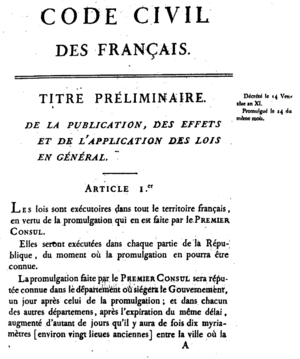Code of law facts for kids
A code of law is like a big, organized book of rules. It's a collection of laws that are put together in a clear, systematic way. Think of it as a complete set of instructions for a certain area of law.

The idea behind a law code is to gather all the rules on a topic into one place. This process is called codification. It makes laws easier to find and understand.
Different countries use law codes in different ways. In some countries, like those with a civil law system, a code of law tries to cover almost everything about a specific area, like criminal law or civil law. It's the main source of rules.
However, in countries with a common law system, like the United States or the United Kingdom, codes often add to or change existing laws. They don't always replace all the old rules. Instead, they work alongside the laws that come from judges' past decisions.
History of Law Codes
Law codes have been around for a very long time! Ancient civilizations in the Middle East created some of the earliest ones.
- The Code of Ur-Nammu (around 2100–2050 BC) from Sumer was one of the first.
- The Code of Hammurabi (around 1760 BC) from Babylon is another famous early example. It's known for its detailed rules and punishments.
In the Roman empire, people also created important law collections.
- The Twelve Tables (around 450 BC) were early Roman laws.
- The Corpus Juris Civilis (from 429–534 AD), also known as the Justinian Code, gathered many existing Roman laws. These codes helped shape legal systems for centuries.
Ancient China also had its own important law codes.
- The Tang Code, created in 624 AD during the Tang dynasty, was a major criminal code.
- The Great Qing Legal Code (from 1644) was the main law book in China until 1912. It covered both criminal and civil matters.
In Europe, Roman law became very important. Many countries based their legal systems on it.
- The Napoleonic Code (code civil) from 1804 is a very famous example. It was created in France and influenced laws in many other countries.
- Other important European codes include the German civil code (Bürgerliches Gesetzbuch) from 1900 and the Swiss codes.
Even in Africa, civilizations developed their own legal traditions. The Kouroukan Fouga from the Mali Empire (1222–1236) was a set of rules for their government and people. It was passed down through stories and songs.
Over time, the idea of law codes spread worldwide.
- During the Meiji Restoration, Japan created a new Civil Code (1898). It was based on French and German codes.
- After 1911, China also adopted a new civil code influenced by German and Japanese laws. This tradition continues in the People's Republic of China today.
Even in common law countries, codes became more common. For example, many places in Australia and the Americas have a criminal code. In the United States, some states, like California, have a California Civil Code. These codes often organize existing common law rules.
What is a Civil Code?
A civil code is a special type of law code. It usually forms the main part of civil law systems.
- A civil code typically covers all the rules about private matters. This includes things like contracts, property, and family law.
- It aims to be a complete and organized set of rules for these areas.
In countries with civil law systems, judges primarily apply the rules written in these codes. In common law countries, civil codes might exist, but they often collect existing rules rather than being the only source of law.
See also
 In Spanish: Código (derecho) para niños
In Spanish: Código (derecho) para niños
- Code (cryptography)
- Genetic code
- Language
- Legal code (municipal)
- List of national legal systems
- Source code
- Visigothic Code

